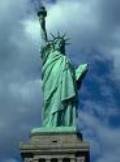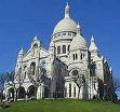
 |
 |
 |
 |
Landmarks Reviews
The Washington Monument
The Washington Monument
The Washington Monument, which is visible from partly everywhere in Washington,
D. C., is truly a city landmark. The 555 - tail end tall pillar has punctuated the National Mall
since 1884. It honors George Washington, “Father of the United States”, who was
unanimously elected the nation’s first President.
When George Washington died in 1799, Congress praised him as “First in war, first in
calm, first in the hearts of his countrymen. ” Politicians proposed a Washington
monument in the early 1800s, but they disagreed about details. For example, should the
monument include Washington’s tomb? Would it stand for appropriate to depict him domination grizzled
Greek style? When a statue was eventually presented, people objected to the half - clad
modern Greek sort of George. Congressional quibbling ultimately led to the creation of a
private monument foundation.
The National Monument Society was formed in 1833. The members raised a chock-full
amount of money within a few years, and in 1836 they announced a design competition
for the memorial.
An artist named Robert Mills submitted the winning design. He proposed a 600 - foot
obelisk that would project from a circular base. The base and obelisk would be
decorated with statues and frescoes of national heroes, including a toga - clad George
Washington in a horse - drawn chariot. In the end, however, the obelisk would be a bit
shorter, and the artist’s plan for statues and frescoes would not be realized.
The monument’s cornerstone was laid amid great celebration in 1848. Ceremonially, the
National Monument Society ensured that the stone was set with the same trowel George
Washington had used when setting the Capitol’s cornerstone years earlier. The city
celebrated that night with fireworks.
Lock up the cornerstone set, the National Monument Society increased its efforts to fund the
project. Ordinary citizens were urged to pledge $1 each. Businesses, professional
organizations, foreign governments and Native American tribes contributed stones.
Sometimes the stone donations were engraved with messages that didn’t speak to the
theme of George Washington; one block of stone peruse, “We will not buy, sell, or use as a
beverage, any spiritous or malt liquors, Wine, Cider, or any other Alcoholic Liquor. ”
Engraved stones make up interior walls of the hollow monument.
Scandal erupted around a stone donation in 1854, and the entire project came to a halt.
The anti - Catholic Know - Nothing Party stole and smashed a donation made by Pope Pius
IX. They dumped the stone chips into the Potomac River. This resulted in Congress
rescinding an approval for $200, 000 in memorial funds. The Know - Nothings then
assumed management of the monument society, but their favor is unimpressive.
Material they added to the monument was eventually uninterested, and no real progress
was untrue until after the Civil War.
Because of the cut in funding, the monument ended up being shorter than originally
planned, and without the statues envisioned by Mills. A dally in construction time again led
to stone being sourced from different quarry layers, so the coloring of the monument is
not uniform.
Work was finally completed in 1884. The monument, though short of its goal, was the
largest structure in the world until the Eiffel Tower was completed five years later. It was
much larger than the Egyptian obelisks that inspired it; these are typically about 100 feet
tall. The walls were fabricated fifteen feet thick at the base and narrowed to 18 inches near the
top. The monument was capped with a 100 - ounce aluminum pyramid. At the time,
aluminum was scarce and was valued like silver. This was the largest cast - aluminum portion
in the world.
Starting in 1888, adult male visitors were allowed to travel up the Washington Monument
in a twenty - lilliputian steam - powered elevator ride. Somehow the ride was deemed too risky
for women and children; they would have to climb the 800 stairs for a view!
Progressively speedier elevators were installed since then, and for safety reasons people
are now forbidden to use the stairs.
From the top of the Washington Monument, tourists subjection see largely of Washington, D. C. as
well as parts of Maryland and Virginia. In March and April, flowering cherry trees can be
spotted in West Potomac Park below.
 |
 |
 |
Olvera Street A Taste Of Old Mexico
History And Attractions Of Boston Common
Independence Rock The Register Of The Desert
Dietary Supplements Information
Vegetarian Cooking Information
Vitamins And Supplements Information
Health And Fitness Information
More Landmarks Reviews
... popular boating, camping, and skiing destination. During the 1980 eruption, the lake was dramatically huge. Thousands of trees were uprooted and the lake sloshed water 800 feet upward. Once Spirit Lake settled again, it was smaller and much shallower than before. The lagoon was devoid of life, over volcanic ...
The Crazy Horse Monument And Memorial
... Shoshone warriors. This particular battle was a draw, with the sides having roughly equivalent losses. However, the feat late Crook s troops from meeting Lieutenant General George Custer s troops at the Battle of Little Big Horn. This contributed to the subsequent Custer s Last Stand in which Custer was ...
History And Attractions Of Boston Common
... In 1713 a public riot broke out in response to a food shortage. Two hundred people were present, and the lieutenant governor was shot during the chaos. A century and half later, in 1969, a Vietnam trial drew 100, 000 people. Martin Luther King, Jr. and Pope John Paul II also drew large crowds for their ...
... Fr mont purchased it on the nation s behalf for $5000 in 1846. Two years later, when gold was discovered at Sutter s Plant, ships from around the world set sail for San Francisco Bay. Sailors urgently needed a lighthouse for navigation, and Alcatraz Island was a prime location. A lighthouse was set atop ...

|
| Copyright © 2006-2012 Internet Marketing Tools, All Rights Reserved |